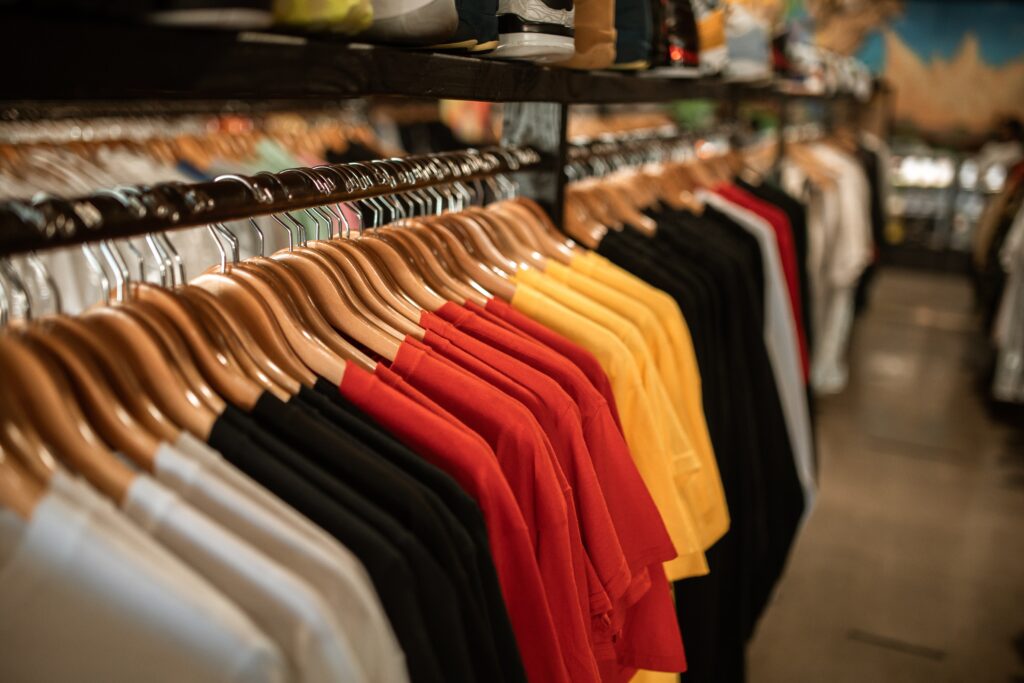Clothing is one of man’s essentials. But with the advent of the fast fashion industry, dressing up is quickly becoming more and more subjective and luxurious, since prices of such goods are getting a lot crazier than ever before! This is a good thing for fashion designers or for anyone who is interested in starting an apparel business. And if you’re that kind of person, then you’re in for a treat. In this article, you’ll find a few essential tips you need to learn on how to start a clothing business.
Determine your Niche
Before you start producing clothes by the millions, you first need to address one big issue: what is your fashion niche? That in itself is a pretty difficult obstacle to overcome because fashion is an enormous industry with a spectrum of niches as long as the rainbow. Do you want to introduce a new line of wedding fashion? Perhaps you want to offer fashionable clothes for babies and toddlers. Do you want to dress up the elderly? Or maybe you’re into making the best clothes for beach summer fun? All of that must be taken into consideration and frankly, you should not be moving forward without locking in on your niche.
To help you deal with this seemingly insurmountable task, here’s a comprehensive guide on how to find your fashion brand niche.
Raise Funds
Assuming you already have a niche in mind, you must then raise enough funds to start production. This step is necessary but can actually happen after the next ones listed in this article especially if you’re looking to fund your collection through crowdfunding platforms. But that aside, you still need a lot of money to start turning your dream into reality.
If you’re loaded, that’s good. But if you’re like most people and lack the capital to make good clothes, then your options include getting a loan, asking for money from family or friends, or pitch your project to an investor.
Develop a Business Plan
Here’s the nitty-gritty part of your business. A business plan is a document that outlines what your business is all about. This includes your objectives and how you are going to achieve them. Making a business plan is necessary since this also serves as a guide for your operations, finances, and marketing strategies. Plus, a well-written business plan can attract investors even before you start production.
On the one hand, a business plan should be regularly updated. Once your fashion company takes flight, you should consider making a business growth strategy, which is another document about the enterprise which specifically details your expansion plans moving forward.
Identify your Brand
The next step you need to figure out is to identify what your brand is. The way to go about this is through designing a nice brand logo and thinking of a good brand name to go with it. Any successful clothing company has a unique logo that is of course sewn in on all of their clothes with name labels. It’s just the way things go. Some companies who have already established their brands even use the logos as the only design in their clothes. So pay close attention to how your brand name and logo will look.
Test and Perfect your Designs
Now comes the fun part: designing and producing your clothes. No idea is perfect right from the very beginning. You’d need to make a few adjustments to make sure they come out great in the market. Therefore, please do not rush this step because it could seriously make or break your company. Take extra care about designing and making your products because after all, that’s what your customers will be paying for.
Create your identity & choose a direction
Having a name for your clothing line is vital, but many people need to pay more attention to the next most important thing which is positioning your brand in a specific market. You must know your target audience and keep your attention in one place. It would not make sense to offer one shirt with a kitten on it while selling ten T-rex shirts if your clothing line is exclusively dinosaur-themed.
Consistent clothing lines occasionally include one or two eccentric designs purely out of personal like for a certain animal, bike, monster, etc. If you want people to recognize your brand, you have to make it easy for them to do so. Be consistent throughout, presenting your ability in an elegant way while continuing to be recognized in your chosen field.
The piece about Comfort Colors illustrates how their distinctive brand and high-caliber goods propel them ahead. Once you have a solid identity, networking will be simpler for you, which is crucial for growth.
Know your audience
To begin, you must comprehend what or for whom you are doing. Is that a reason? Is it a game? Is it an organization? Is it a pastime? Make sure it is something you intend to pursue for a very long time. The next stage is to choose the audience for your creations.
The greatest strategy to sell a clothing line is to be aware of your target market. how many people have clothing lines and do not know whom they are selling to If you do not know which direction to take with your product or design, first You must ask yourself, “Who is my target market?” A market for t-shirts from a fishing equipment firm may have different fit and comfort requirements than a group of high fashion devotees.
A target market is a set of clients on which a company has chosen to focus its marketing initiatives and, eventually, its products. A clearly defined target market is the initial part of a marketing strategy.
There are several factors to take into account, including age range, gender, interests and hobbies, popular trends, speed of style adaptation, willingness to spend a lot of little money, current shopping locations, and many more. People regularly buy customized t-shirts and other printed items because they wish to wear your designs to exhibit their individuality.
All of these are crucial issues to address as you build and develop your brand. It doesn’t follow that your clothing line will be permanently bound to the market you had in mind when you first launched it. This might change as your line develops and gets older. So, use questions to obtain information about the desired shirt type from your audience. Your audience will always support you if you know who they are and invest in them.
Choose the right shirt
People will not wear your clothing if it is not enjoyable to do so. You must thus pick an item that will excite you both physically and visually. T-shirts are available in a variety of cuts, hues, weights, and fabric combinations. Some even feature tear-away tags. There are several options, which may be overwhelming if you are new to the custom tee game.
After a period, you will have sales data of your own to use as a basis for these choices. If you sold five times as many heavyweight tickets as lightweight tickets the previous year, for instance, you could probably bet that heavyweight is where you should invest your money this year. However, you do not have that information when you are just starting out. How do you come to such decisions?
In order to maintain decent margins and generate money while providing your consumer with a high-quality shirt, first, be sure to know your budget!
Second, it is advised against going overboard with fashion. Not every crew cut, tank, long sleeve, and hoodie in existence needs to have your design on it! Before investing all of your resources in one design, pick no more than 1-2 designs and make sure it resonates.
Research
Continually do more research! Before you just sell a thing, know it. You do not want to shortchange yourself by choosing one style because you did not take the time or effort to look into other creative possibilities that produce various outcomes on the subject of t-shirt printing, there are so many different solutions available.
Learn about the many screen sizes and print options, the differences between plastisol and water-based ink, the several shirt options and the varied fabrics each one is made of, and expert add-on services like hem tags and custom printed tags. The design, the feel, and the delivery strategy are all things that will concern your client.
This is your brand, your company, and your clothesline. Make certain that the printer you pick will travel with you on this expedition. Your reputation is in their hands if they are not devoted to excellence and fastidious about quality. Choose the printer you can form a close relationship with, whom you can rely on for support, and who will stand by your while you celebrate your significant accomplishments.
The initial investment
While developing retail-quality shirts (with all the retail add-on bells & whistles that enhance your brand), there are clever ways to save costs. Discover which t-shirts are the most affordable dependent on the capital you wish to put into your clothing company. Knowledge is power. When there are several excellent value alternatives available, you might not want to choose the most costly blank garment if you are on a tight budget.
You do not have to start at the top. Move up the ladder! At the same time, you want to offer a high-quality product, so resist the temptation to choose a less expensive shirt just because it isn’t soft or comfy. People will not wear it, therefore that’s where the fault lies. If no one is wearing your brand, how can it potentially get greater popularity? This is why conducting research and choosing the best printer to work with are so important to the early success of your business.
Selling your shirts
You should also select how much you want to charge for your shirts. Here are some things to remember:
- What did you spend on each one?
- Do you want to break even or merely turn a profit?
- How are you going to buy more shirts if you are losing money on them or making less than you charged for them?
Once again, study your audience, comprehend their spending limits, find out how much other clothing brands with similar styles charge for their shirts, and then make a choice.
If you followed and implemented these tips well, I am convinced that you are ready to launch your apparel brand! Whether or not you’re goal is to one day be part of the New York Fashion Week, I know for a fact that you will do well in the industry and that the business will flourish in due time. Keep at it and good luck!


